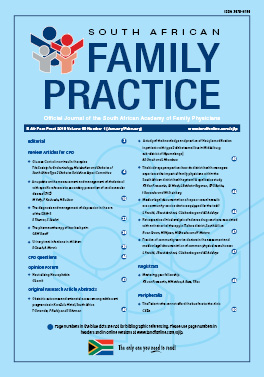An update on the measurement and management of cholesterol with specific reference to secondary prevention of cardiovascular disease (CVD)
Keywords:
secondary prevention, LDL-C, Non-HDL-C, high intensity statins, PSCK9 inhibitors, ezetimibe
Abstract
Cardiovascular disease remains the largest contributor to non-communicable adverse disease outcomes. Treatment and prevention of cardiovascular disease have evolved at a dramatic pace in the last 40 years. Serum-cholesterol has emerged as the dominant risk factor for coronary artery disease and events. The link between serum-cholesterol and arterial atherosclerosis is well documented. The attainment of cholesterol goals has historically concentrated on low-density lipoprotein cholesterol (LDL-C) levels. Current evidence and guidelines have shifted to the attainment of non-HDL-C target levels which represent a more thorough inclusion of small dense atherogenic particles. Methods to reduce serum-cholesterol mainly centre around the use of the HMG CoA-reductase inhibitors also known as the statins. High intensity statins like atorvastatin (80 mg) and rosuvastatin (40 mg) are now the preferred starting therapies to lower cholesterol by at least 40–50% in patients with established cardiovascular disease as secondary prevention. In the event of failure of these medications, evidence suggests that the addition of ezetimibe may enhance the total serum-lowering levels to 50–60%. New therapies aimed at inhibiting PCSK9 revealed exciting new targets for LDL-C lowering, but the high cost of these antibodies could preclude access to this therapeutic intervention. Aggressive pursuit of lower LDL-C or non-high-density lipoprotein cholesterol (non-HDL-C) levels may reduce the incidence of secondary myocardial infarctions, strokes and death from cardiovascular disease.
Section
Review Articles
By submitting manuscripts to SAFP, authors of original articles are assigning copyright to the South African Academy of Family Physicians. Copyright of review articles are assigned to the Publisher, Medpharm Publications (Pty) Ltd, unless otherwise specified. Authors may use their own work after publication without written permission, provided they acknowledge the original source. Individuals and academic institutions may freely copy and distribute articles published in SAFP for educational and research purposes without obtaining permission.

